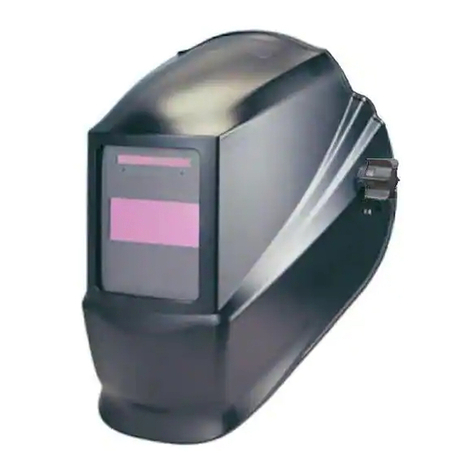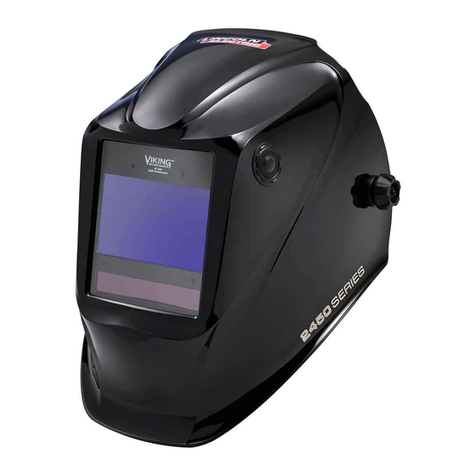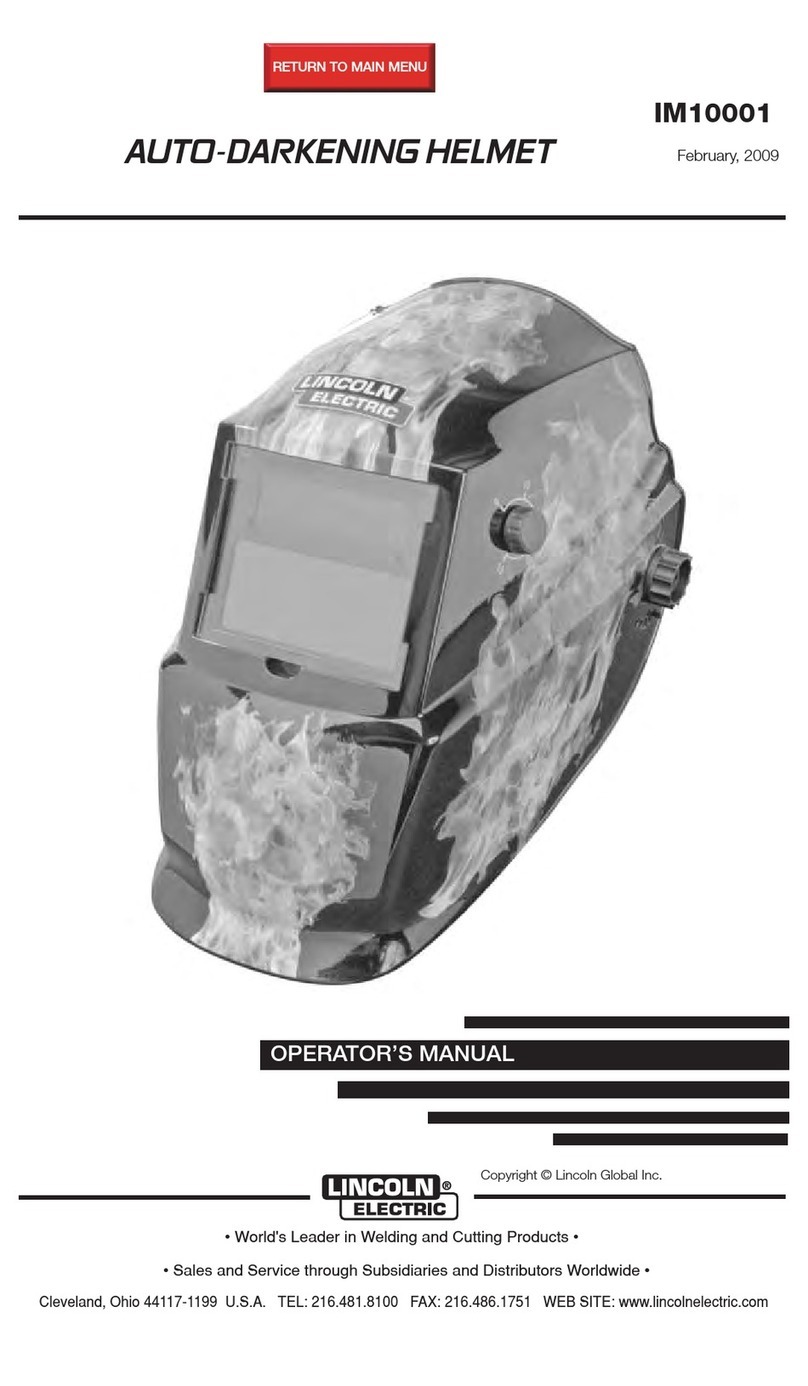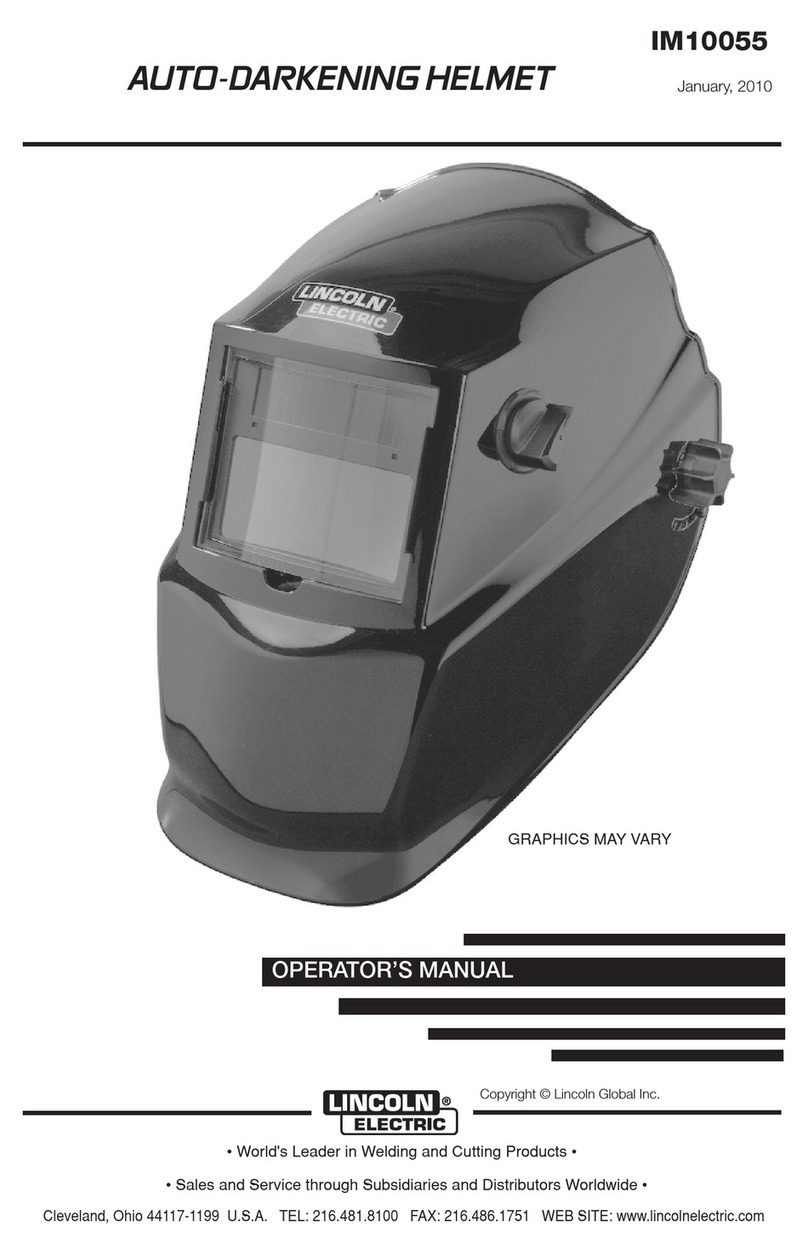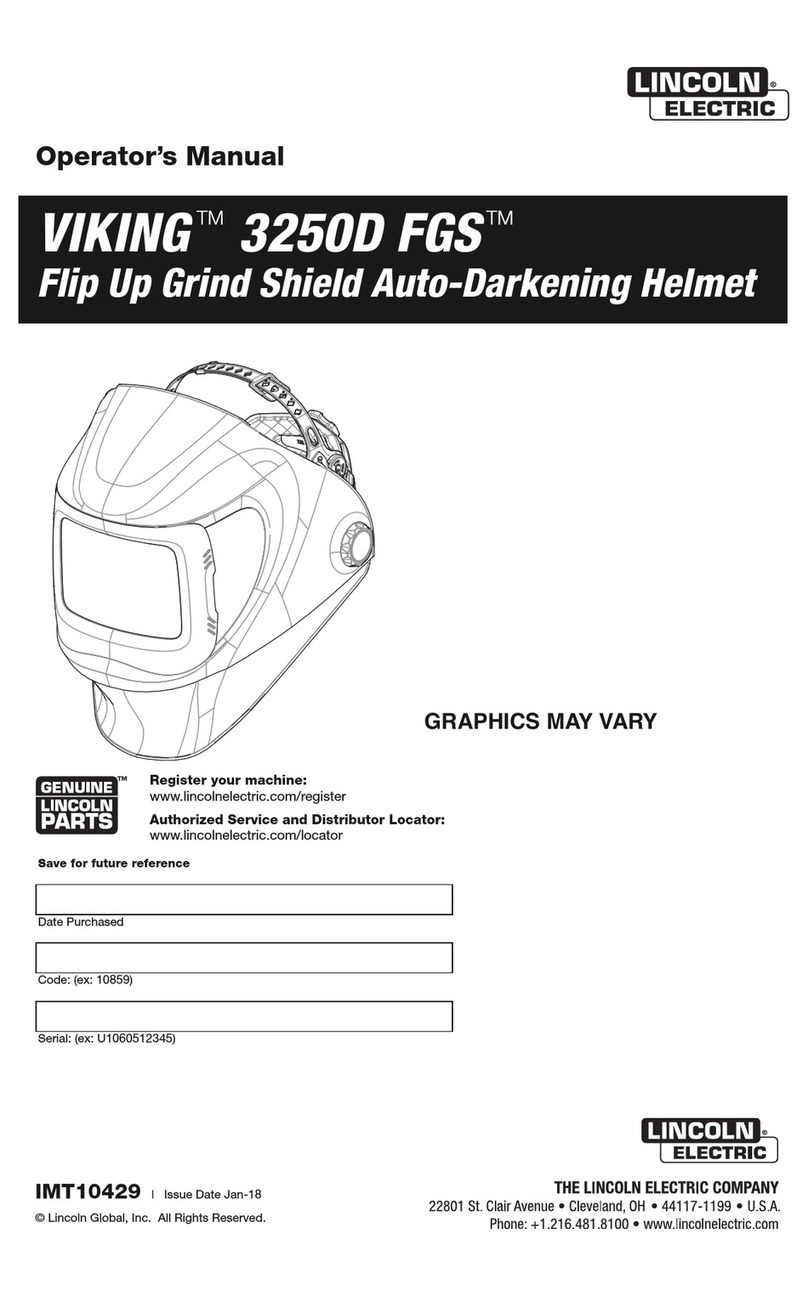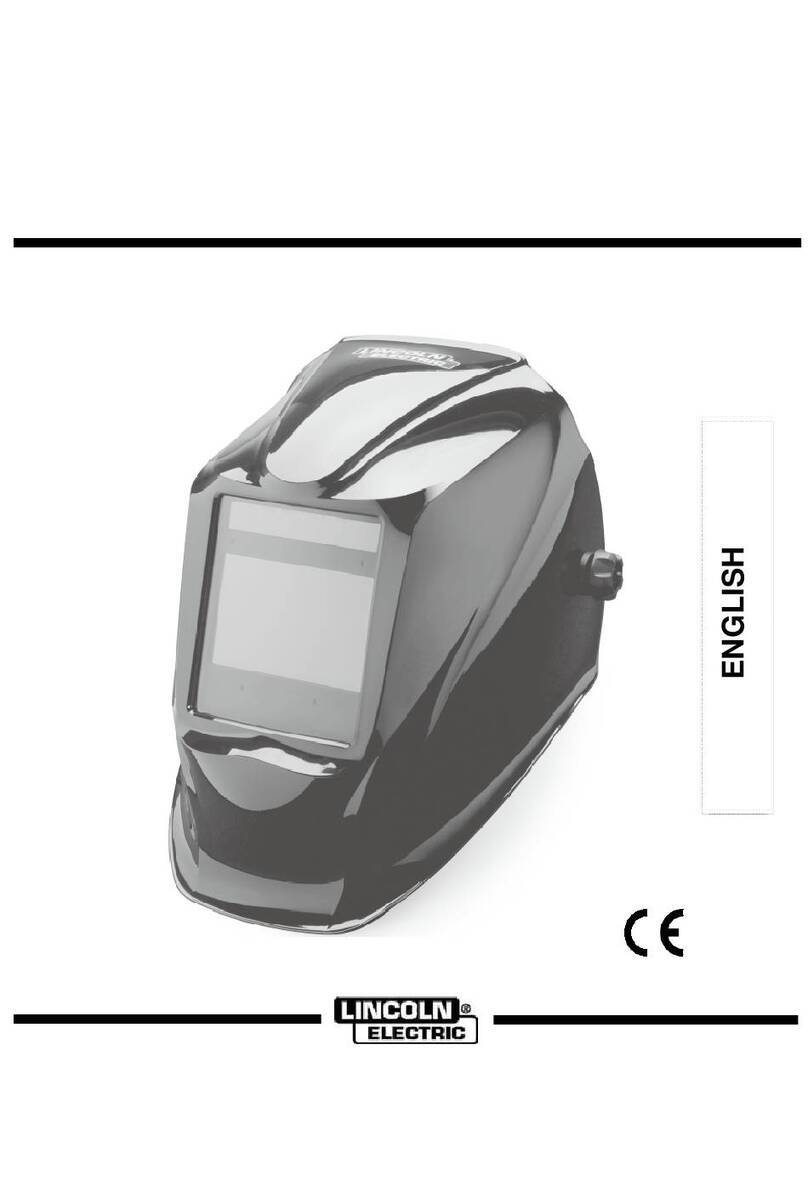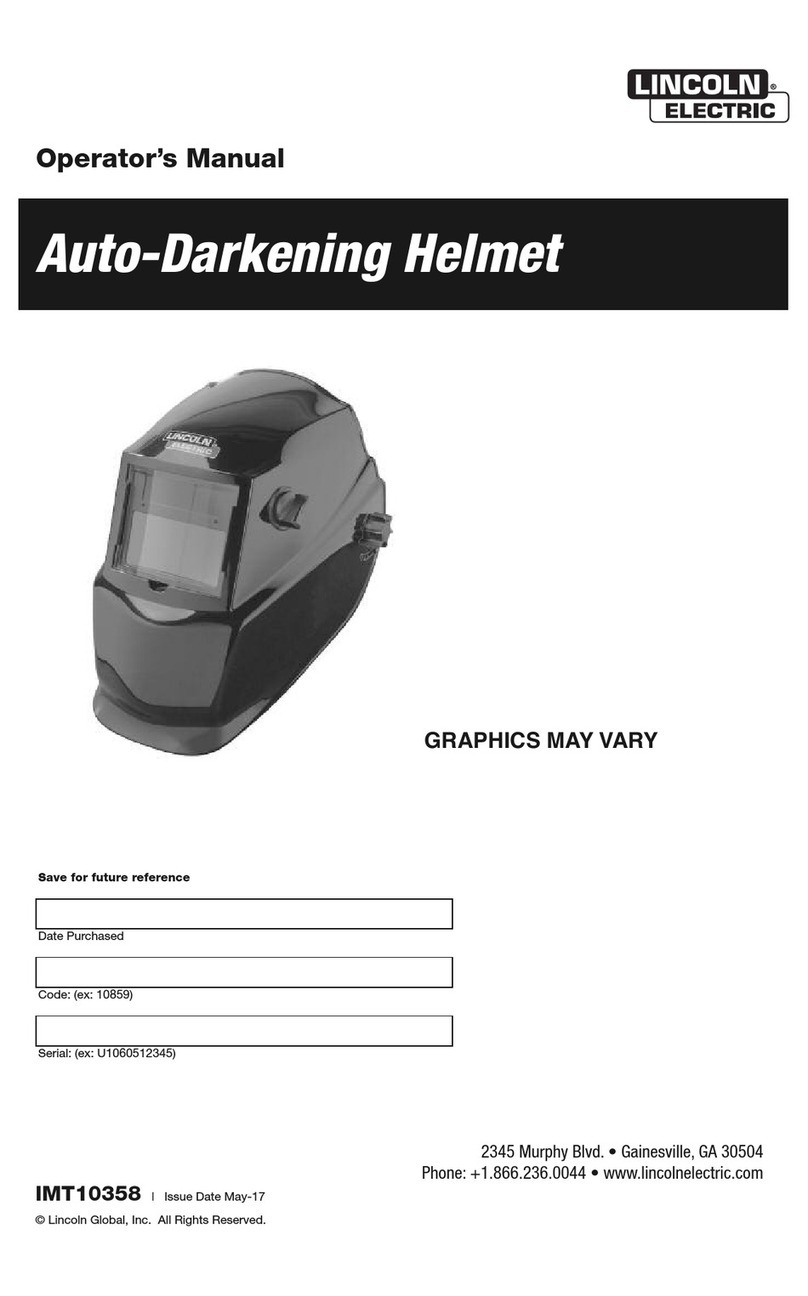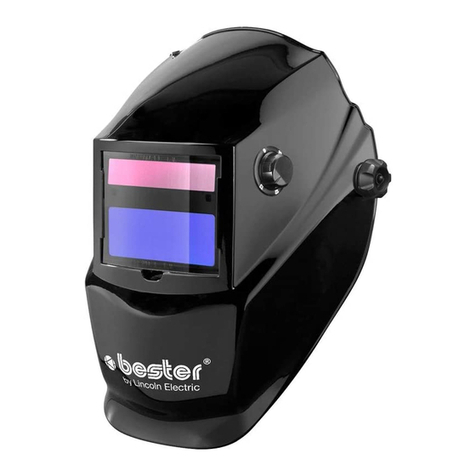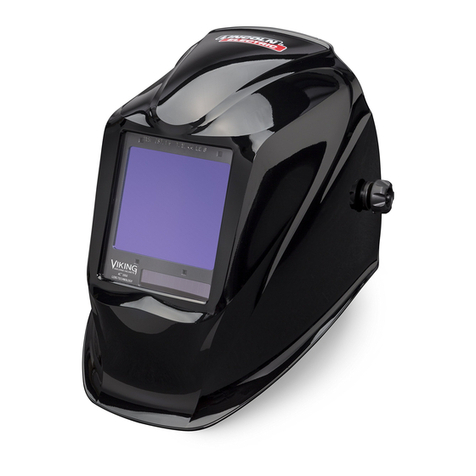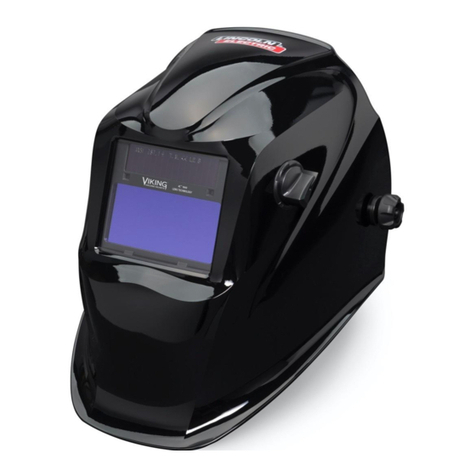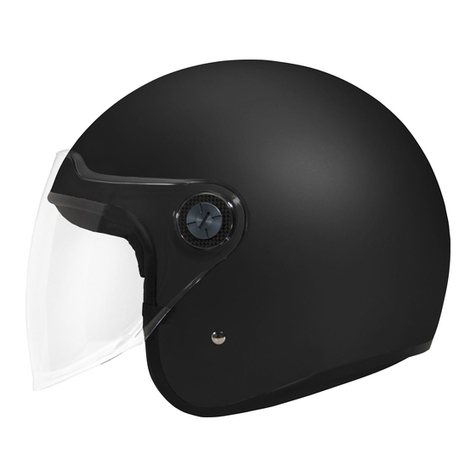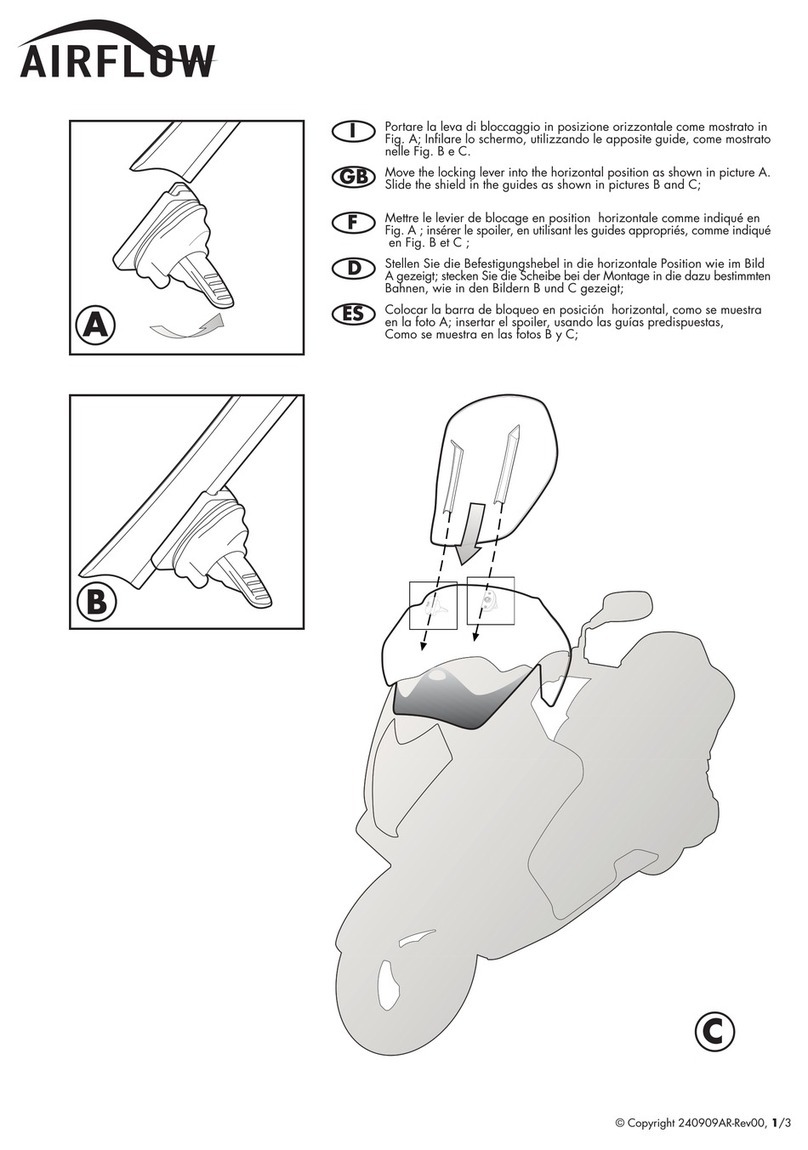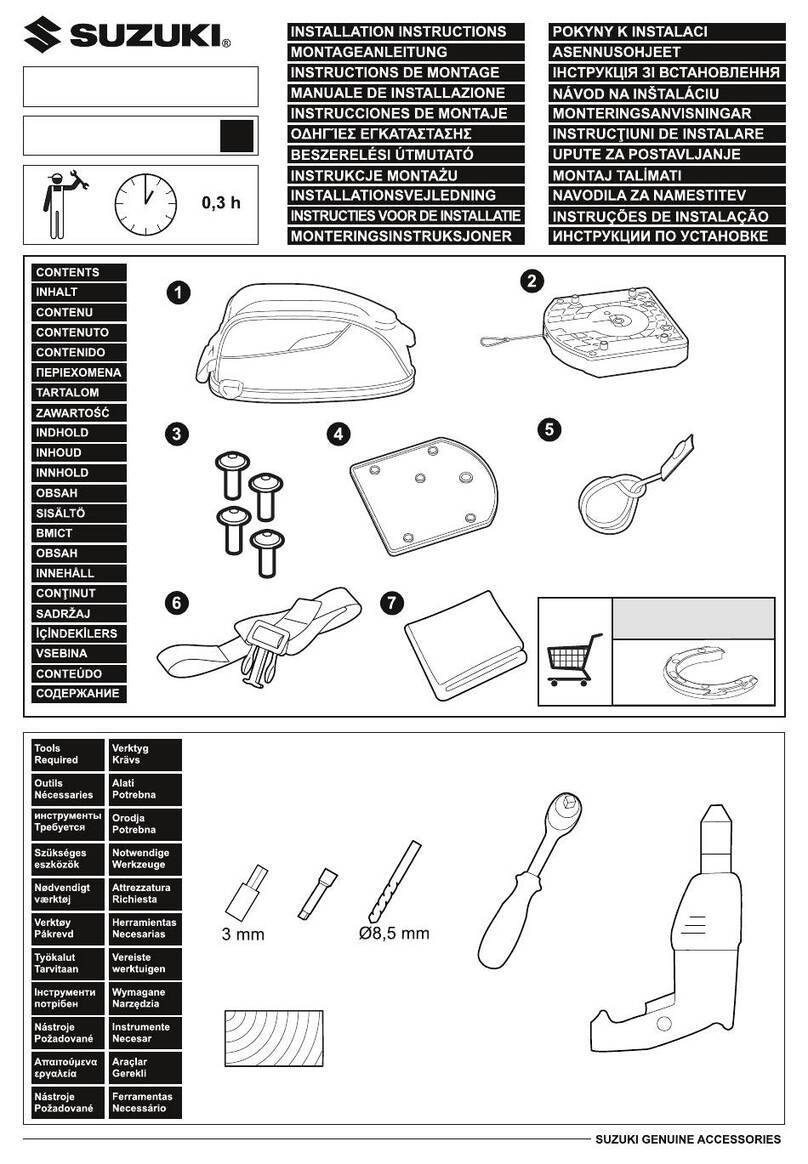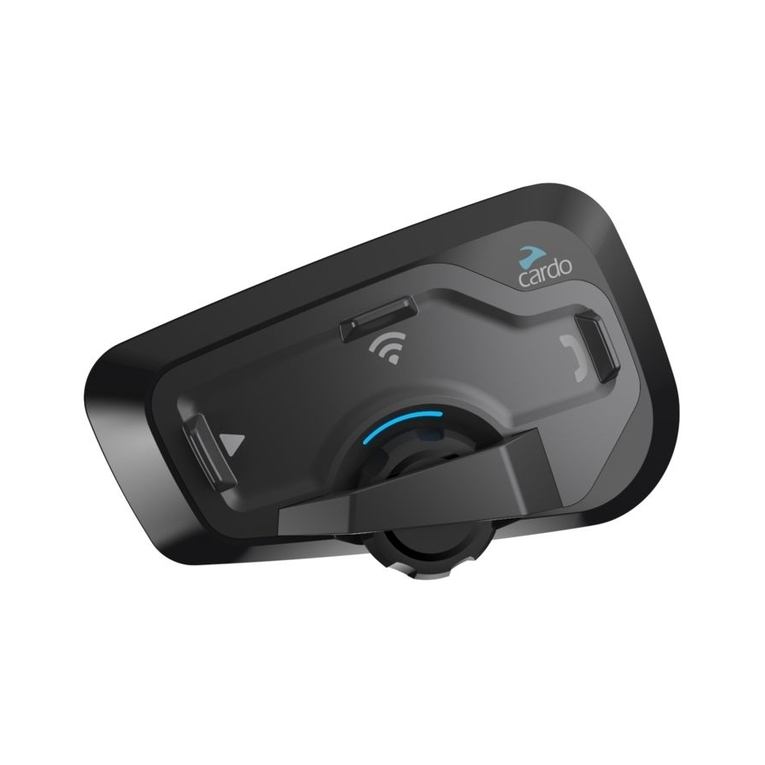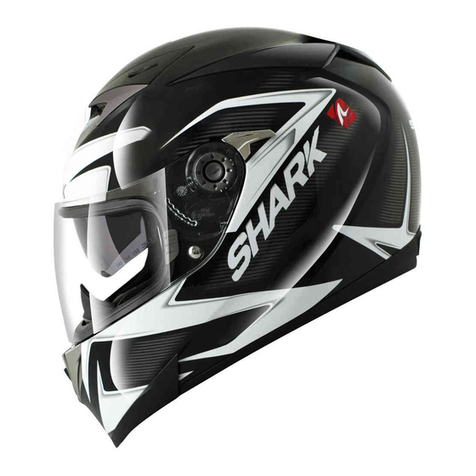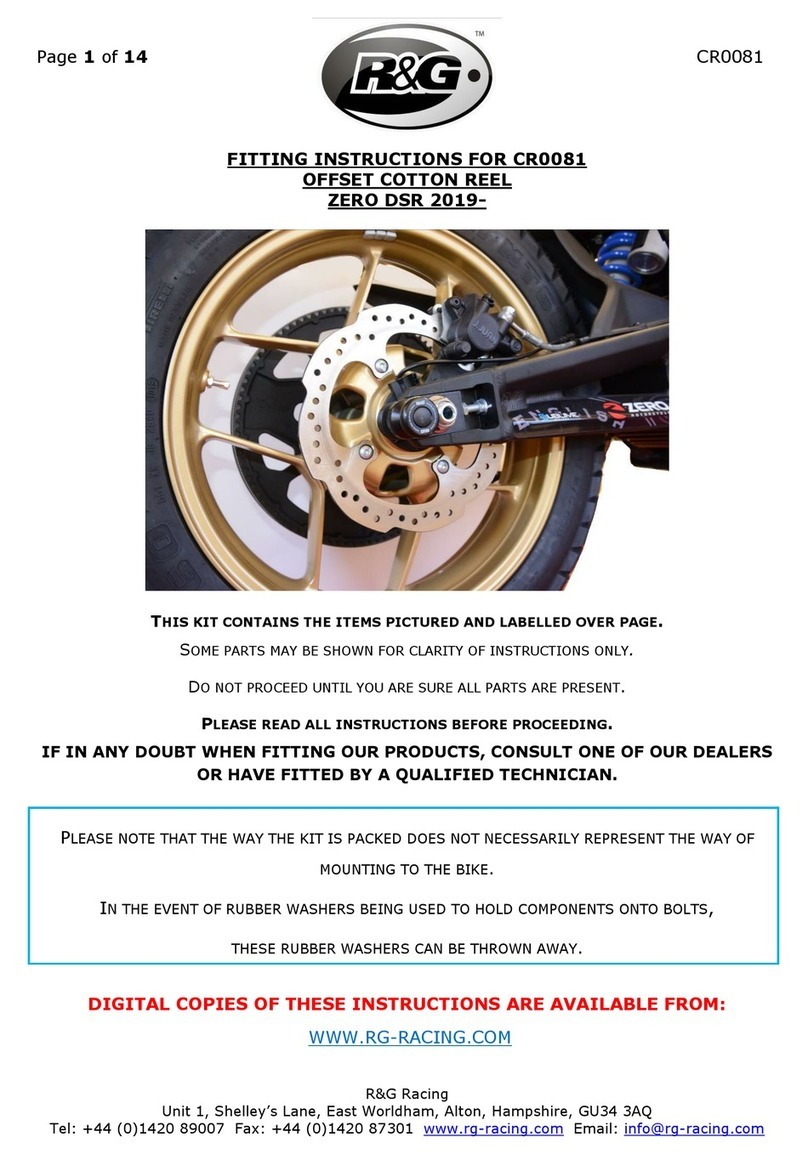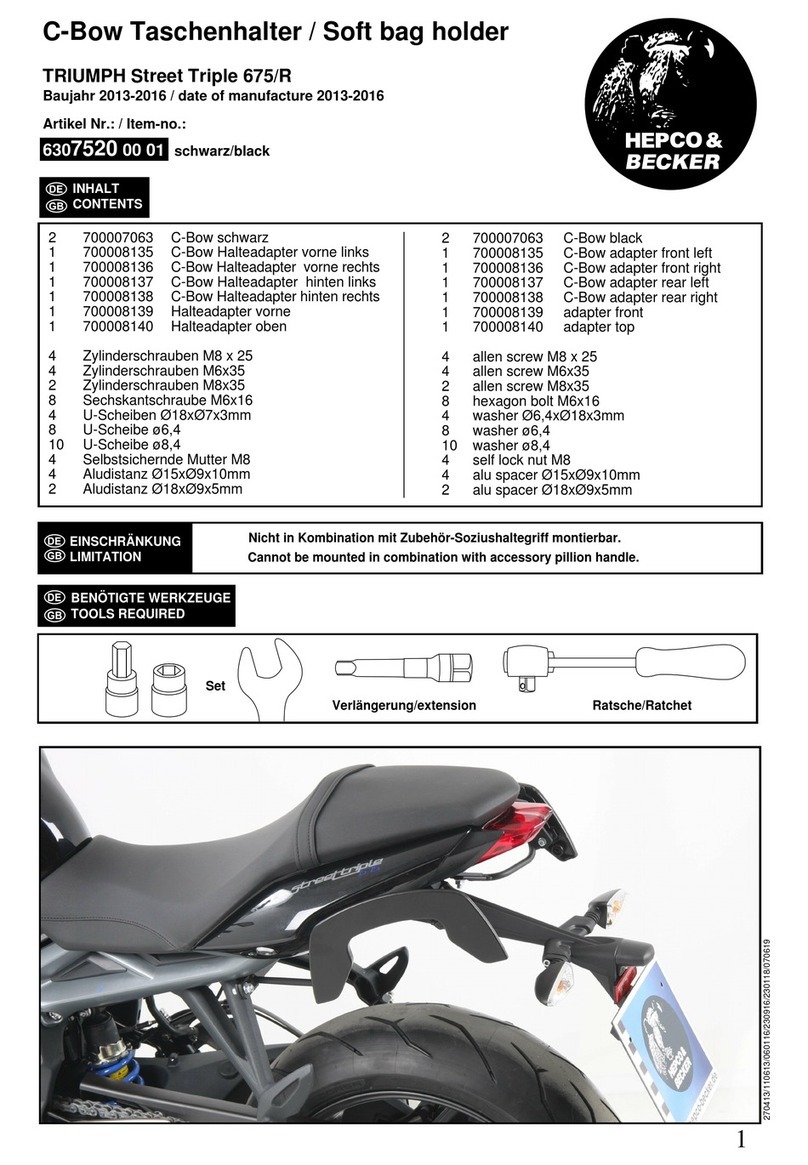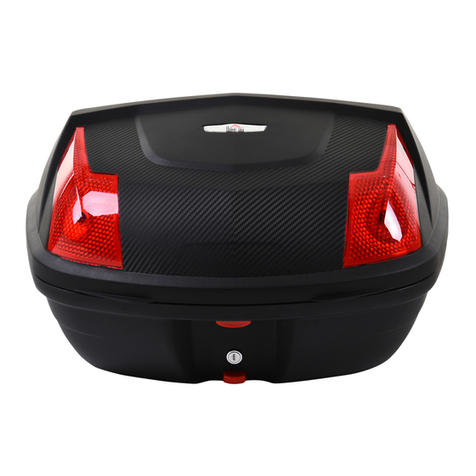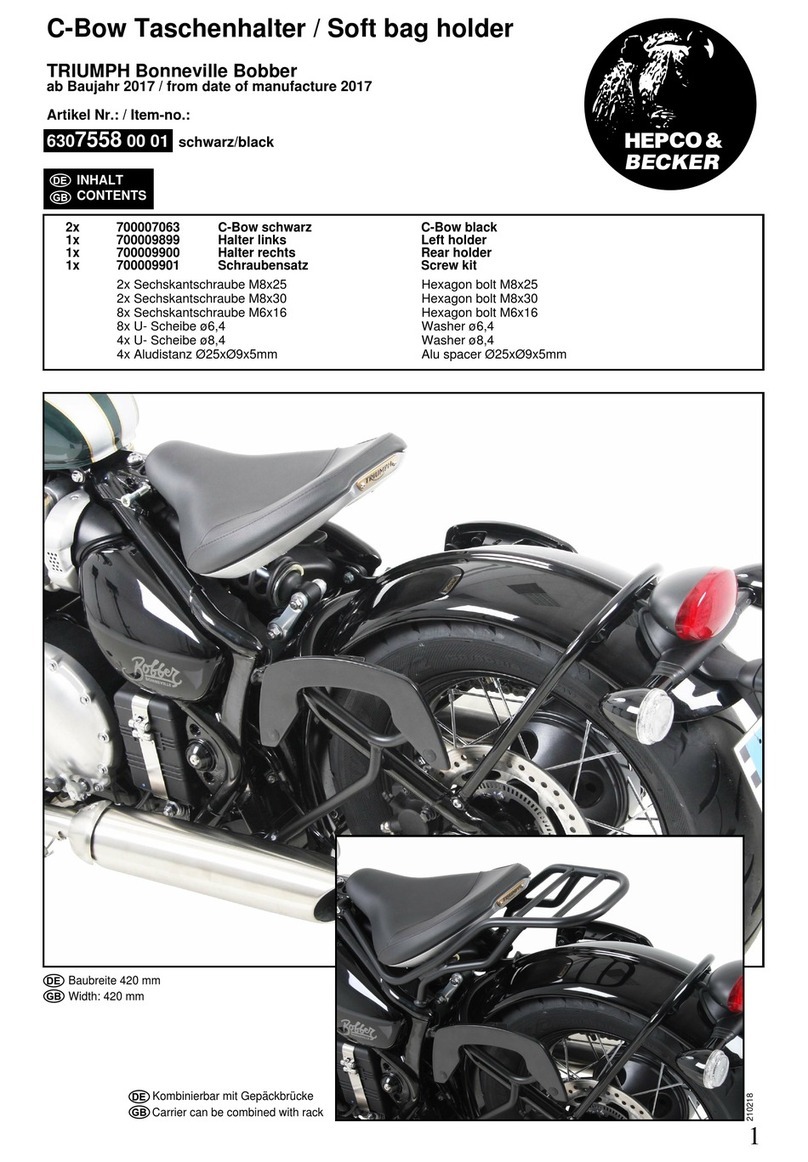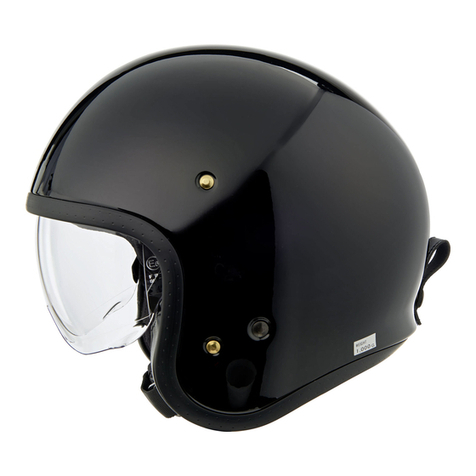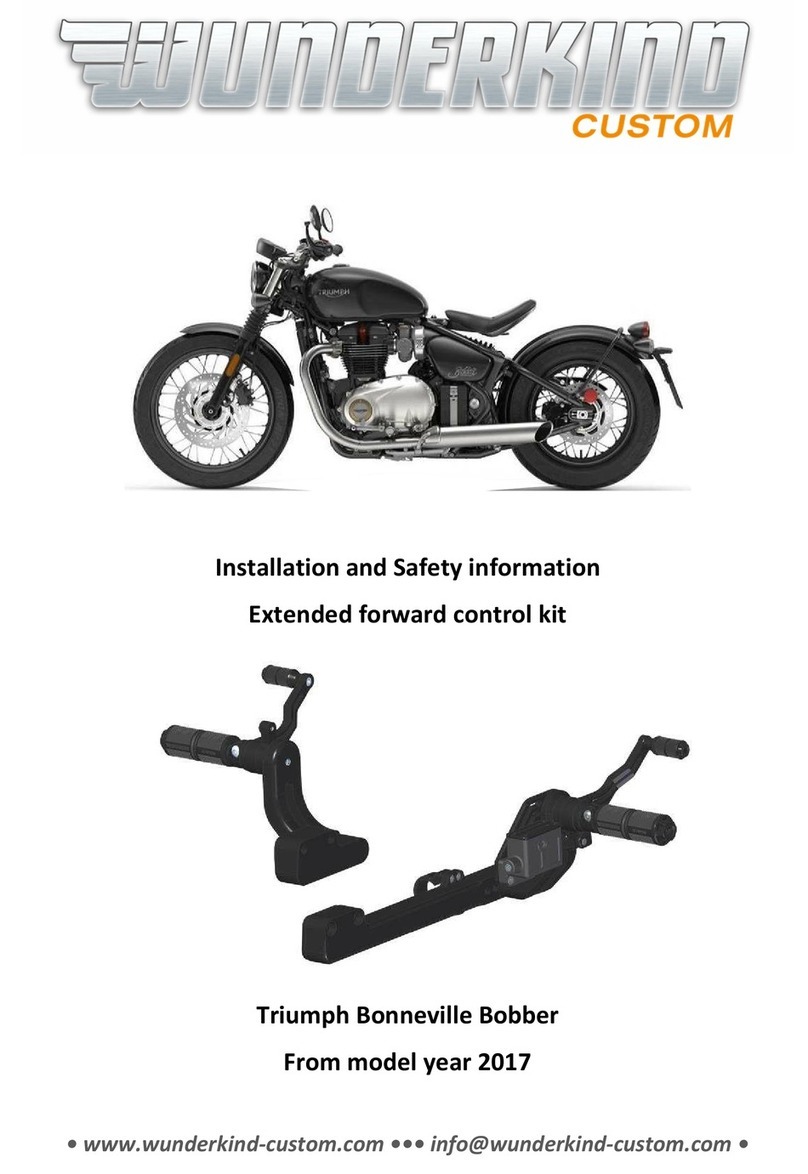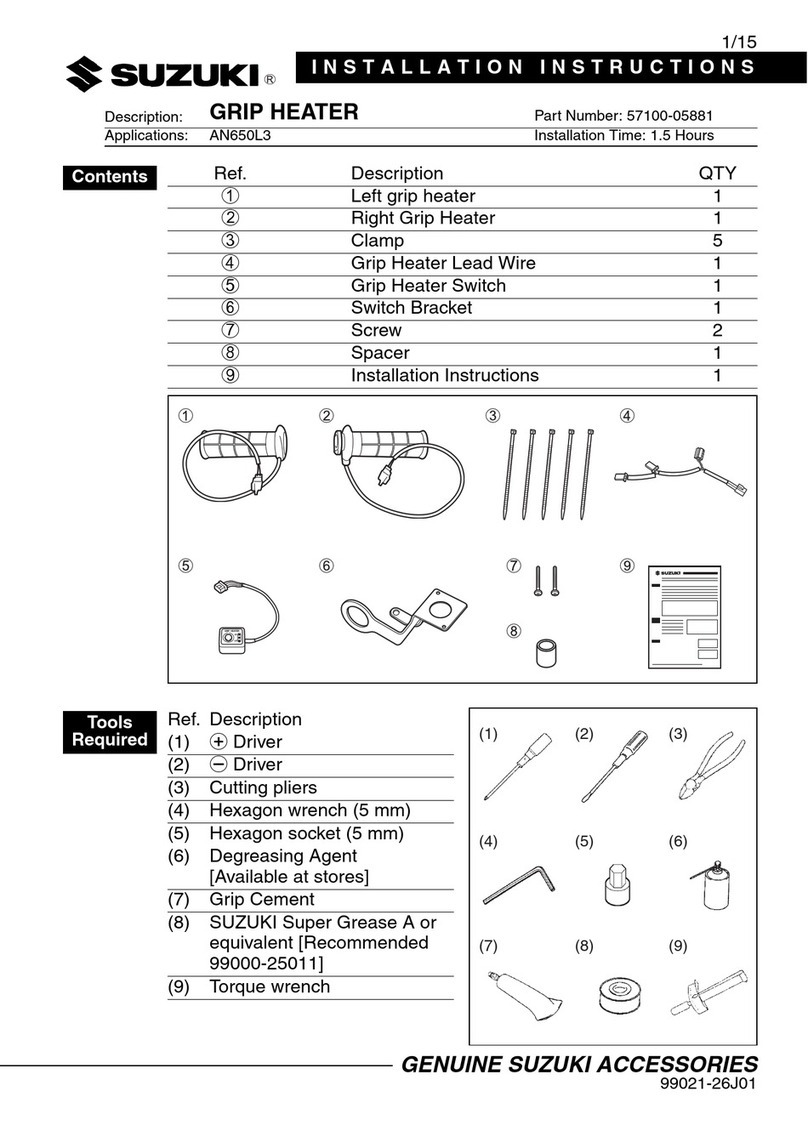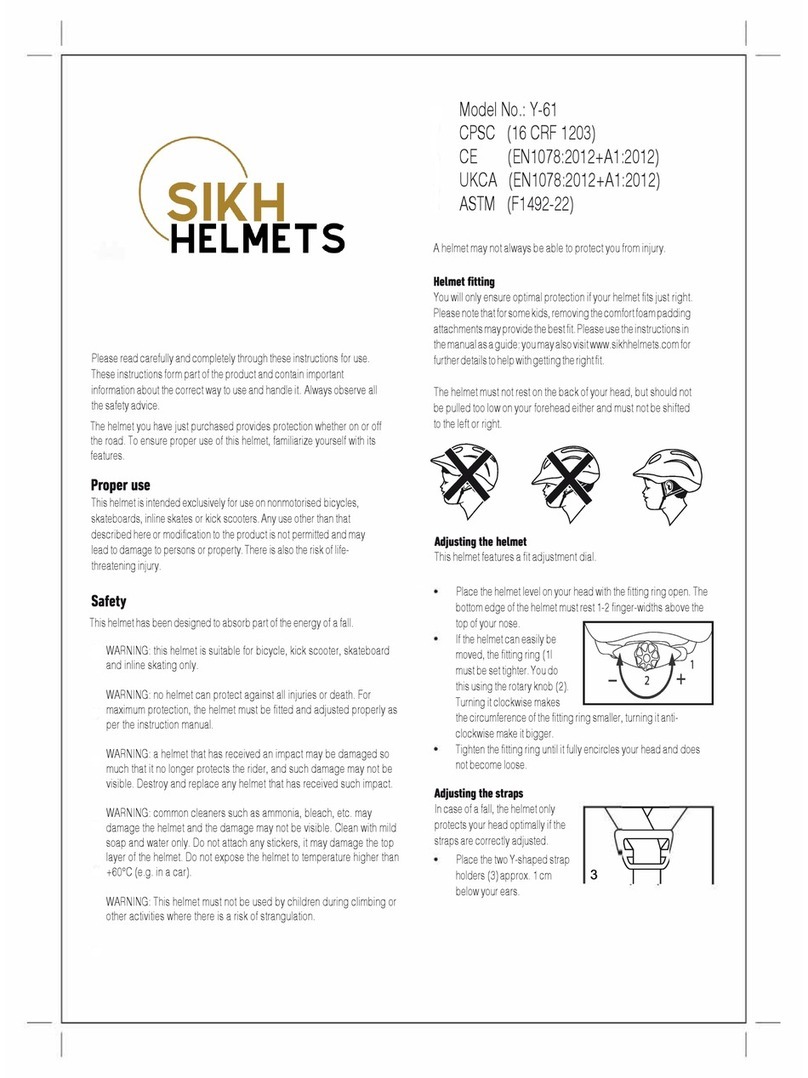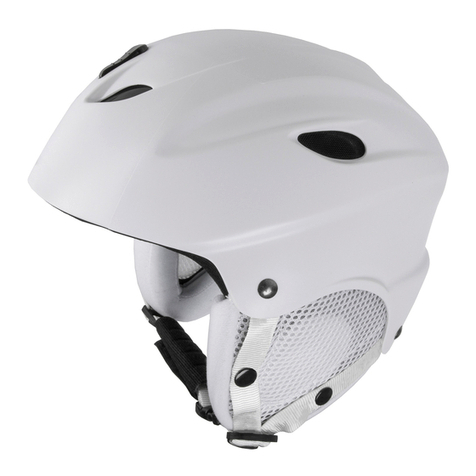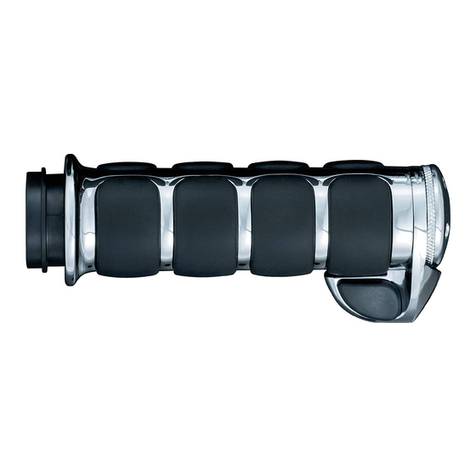
CARTRIDGE OPERATION/FEAT RES
Variable Shade Control
The shade can be adjusted from shade 5 to 8 and 9 to 13 based upon welding
process or application (refer to shade selection chart on page 6). Shade is
adjusted by setting the shade range switch to the proper range, then use the
shade dual scale dial to set the desired shade. The shade range switch and dual
scale dial are located on the ADF cartridge as shown below.
Test Button
Press and hold test to preview shade selection before welding. When released
the viewing window will automatically return to the light state (3.5 Shade)
Sensitivity Knob
Adjust the light sensitivity by turning the SENSITIVITY knob to the left or right as
shown in the figure below.
Turning the knob to the left increases sensitivity
which makes the ADF cartridge more sensitive to light.
When helmet is used
in the presence of excess ambient light or with another welding machine close by,
improved helmet performance can be obtained with a lower setting by turning the
knob to the right to reduce the sensitivity. Grind mode can be selected by rotating
the sensitivity knob all the way to the left until an audible click is heard.
Grind mode is intended for grinding only not for welding.
Delay Time Knob
This control is designed to protect the
welder's eyes from the strong residual rays
after welding. Changing the DELAY Time
knob will vary the dark to light time between
0.1 second (S) to 1.0 second (L). The Lset-
ting is recommended for high amperage
applications where the weld puddle is still
very bright after the welding arc has ceased
and for situations where the filter may be
temporarily blocked from seeing the welding
arc.
Power
This ADF cartridge is powered by two
replaceable batteries and solar power. The
batteries are located at the bottom of the
ADF cartridge. Replace batteries when
LOW BATTERY light is lit. See the specifi-
cation chart on page 3 for type of batteries required.
5
DELAY TIME
LS
*
SENSITIVITY
HI
LO
Grind
SHADE
TEST
BATTERY
LOW
SHADE 5-8
SHADE 9-13
S27978-88
BATTERY
+
BATTERY
+
CR2450CR2450
9
11
10
67
12
13
8
CAN/CSA Z9 4.3
TM Z87W4/5-8 / 9-13
LA B S
AS/NZS 1338.1
4/5-8 / 9-13 TM 1/1/1/1/379
5
HELMET CARE AND MAINTENANCE
Cleaning: Clean helmet by wiping with a soft cloth. Clean cartridge surfaces
regularly. Do not use strong cleaning solutions. Clean sensors and solar cells
with soapy water solution and a clean cloth and wipe dry with a lint-free cloth.
Do NOT submerge shade cartridge in water or other solution.
Storage: Store in a clean, dry location.
SHADE G IDE SETTINGS
If your helmet does not include any one of the shades referenced above, it is
recommended you use the next darker shade.
6
NT1
GUIDE FOR SHADE NUMBERS
OPERATION ELECTRODE SIZE ARC MINIMUM SUGGESTED(1)
1/32 in. (mm) CURRENT (A) PROTECTIVE SHADE NO.
SHADE (COMFORT)
Shielded metal arc Less than 3 (2.5) Less than 60 7 –
welding 3-5 (2.5–4) 60-160 8 10
5-8 (4–6.4) 160-250 10 12
More than 8 (6.4) 250-550 11 14
Gas metal arc Less than 60 7 –
welding and flux 60-160 10 11
cored arc welding 160-250 10 12
250-500 10 14
Gas tungsten arc Less than 50 8 10
welding 50-150 8 12
150-500 10 14
Air carbon (Light) Less than 500 10 12
Arc cutting (Heavy) 500-1000 11 14
Plasma arc welding Less than 20 6 6 to 8
20-100 8 10
100-400 10 12
400-800 11 14
Plasma arc cutting (Light)(2)
(2)
(2) Less than 300 8 9
(Medium) 300-400 9 12
(Heavy) 400-800 10 14
Tor ch b ra z in g – – 3 o r 4
Tor ch s ol d er in g – – 2
Carbon arc welding – – 14
PLATE THICKNESS
in. mm
Gas welding
Light Under 1/8 Under 3.2 4 or 5
Medium 1/8 to 1/2 3.2 to 12.7 5 or 6
Heavy Over 1/2 Over 12.7 6 or 8
Oxygen cutting
Light Under 1 Under 25 3 or 4
Medium 1 to 6 25 to 150 4 or 5
Heavy Over 6 Over 150 5 or 6
(1) As arule of thumb, start with a shade that is too dark, then go to a lighter shade which gives sufficient view of the weld zone without going
below the minimum. In oxyfuel gas welding or cutting where the torch produces a high yellow light, it is desirable to use a filter lens that absorbs
the yellow or sodium line the visible light of the (spectrum) operation
(2) These values apply where the actual arc is clearly seen. Experience has shown that lighter filters may be used when the arc is hidden by the
workpiece.
.
Data from ANSI Z49.1-2005
Shade Dual
Scale Dial
Shade Range
Switch
